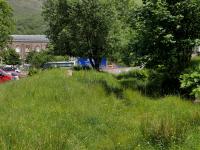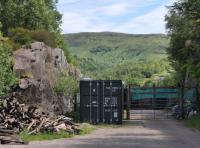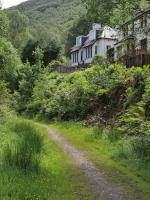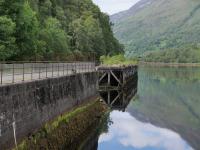Kinlochleven Smelter Tramway
Introduction
This electrified tramway connected the smelter at Kinlochleven with a nearby pier. Bauxite for the works was brought in by sea and aluminium slabs were taken out. The road from Glencoe to Kinlochleven along the south side of the loch was established in the Second World War using German POW manpower and probably reduced the need for the line. Bauxite was also brought in by the Ballachulish Branch (Callander and Oban Railway) and taken on to Kinlochleven. The tramway was removed long before the closure of the works but a very impressive concrete roadbridge over the course of the line still exists.
Locations along the line
These locations are along the line.
...
More details
Bill Roberton 26/06/2021

Bill Roberton 26/06/2021

...
Bill Roberton 26/06/2021

Ewan Crawford //1995
This was a harbour and pier built for the North British Aluminium Company's Kinlochleven Aluminium Smelter with which it was connected by electric tramway. (The NBAC was a subsidiary of the British Aluminium Company).
...

Bill Roberton 26/06/2021

Bill Roberton 26/06/2021










